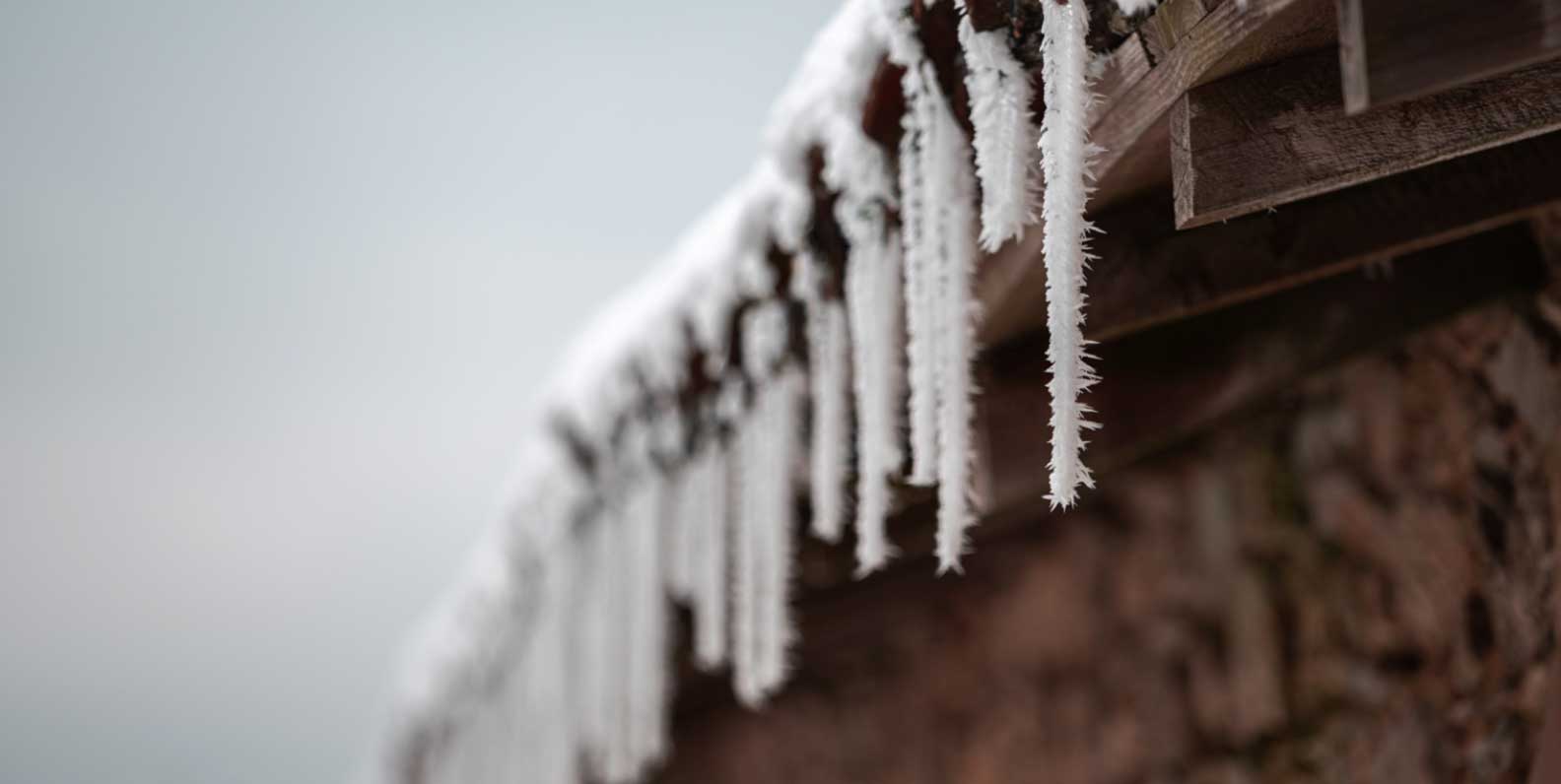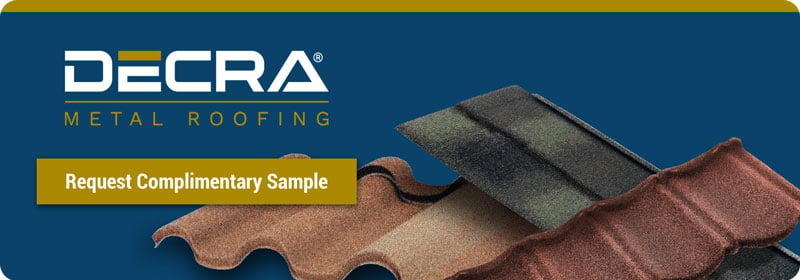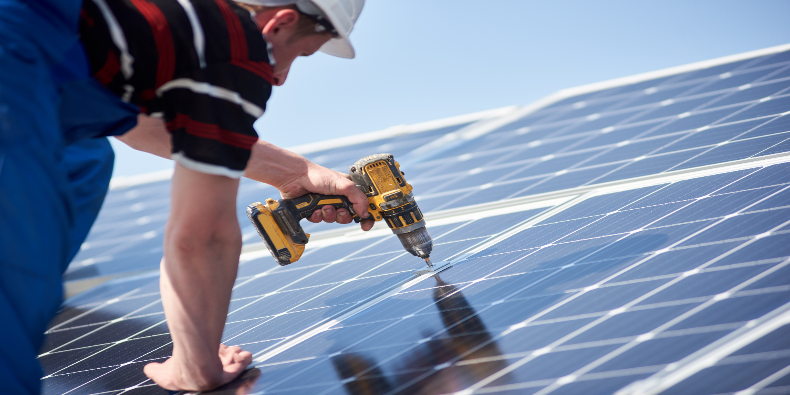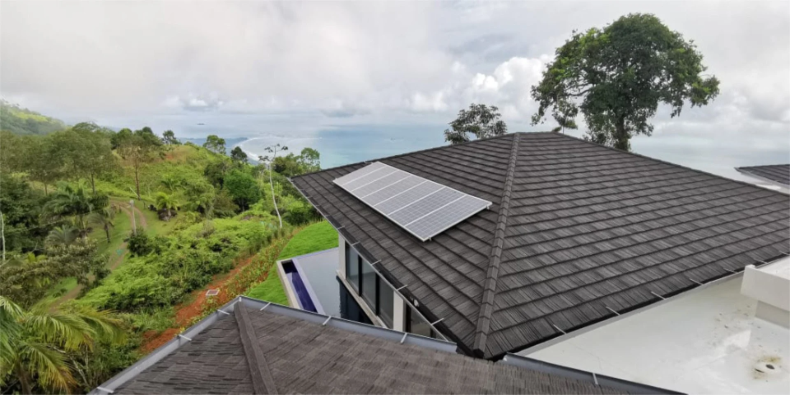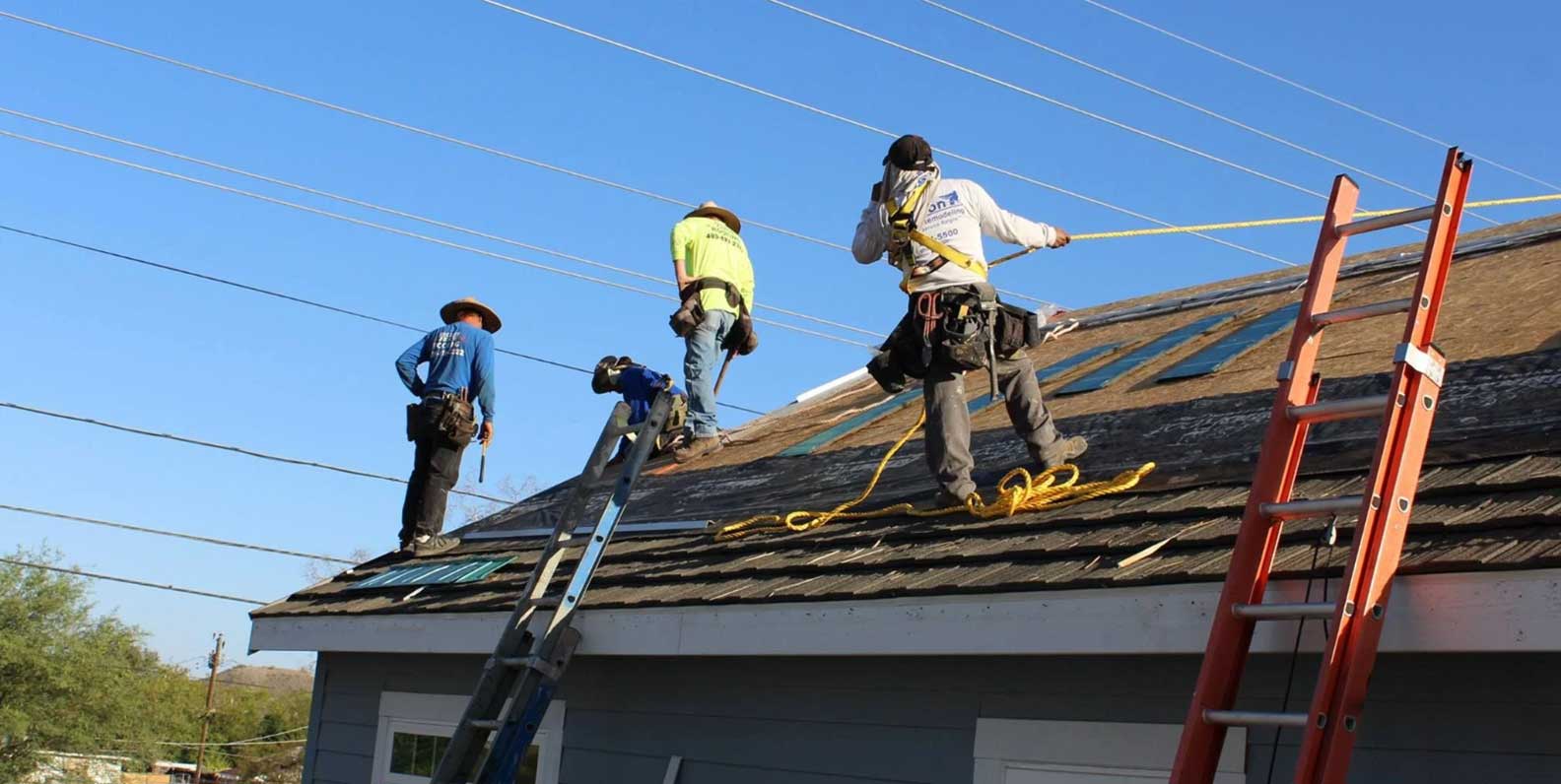Depending on where you live, it’s smart to inspect your roof at least a couple of times a year. But winter inspections are a bit different than those you’d do in summer. Snow, ice, and freezing temperatures can make certain problems harder to spot, and much more serious if left unchecked.
Here are three expert tips for inspecting your roof during colder months:
- Check for surface damage whenever the weather gives you a break from snow and ice.
- Look for ice damming, a common issue that forms during freeze-thaw cycles.
- Inspect your attic or ceilings for signs of interior leaks that could mean your roof is compromised.
Staying proactive with winter roof inspections helps prevent minor issues from turning into costly repairs. If your area has experienced heavy snow, ice storms, or strong winds, don’t wait to take a closer look. Early detection gives you time to address small problems, and if it’s time for a replacement, you’ll know before the damage spreads.
How to Check for Damage Between Storms
Safety should always come first when inspecting your roof during the winter months. If you’re fortunate enough to have a stretch of mild weather with no snow or ice accumulation, take advantage of the opportunity to perform a quick but thorough inspection.
Start by removing debris that has accumulated on the roof, like leaves, twigs, and blown garbage. Remove any moss growth, mushrooms, or lichens. This will give you a clear view of the roof surface for a thorough inspection.
Once the roof is clear, check for signs of roof damage to your shingles, tiles, or shakes. What to look for:
- Loose or missing roofing materials that may have shifted or blown away
- Dents or dings indicating impact damage from hail or branches
- Warped or cracked shingles or tiles caused by temperature fluctuations
- Gaps between roofing segments where water could enter
- Rotting wood or signs of mold where moisture has collected
- Sagging sections due to wear, poor installation, or the weight of snow
Fortunately, homeowners with a DECRA stone-coated metal roof are far less likely to see these issues. DECRA roofs are engineered to perform, and protect, even in the harshest conditions, with features that include:
While it’s common to inspect a roof during the spring and summer months, contractors and homeowners should also make time to assess roofing conditions when the weather turns cold. After all, winter oversights can lead to structural damage for some roofing products that may result in expensive repairs and replacements as the season wears on.
- High impact resistance and a warranty against damage from hailstones as large as 2.5 inches in diameter
- Resistance to wind uplift, even in Miami-Dade-level hurricane force winds of 120 miles per hour
- Protection from rain driven at wind speeds of up to 110 miles per hour, which often seeps into openings on other types of roofs
How to Spot and Prevent Ice Damming
Temperature fluctuations are one of the biggest challenges homeowners face during the winter months. While summer heat is often top of mind, winter temperature swings can be just as damaging to your roof. A DECRA® stone-coated metal roof reflects sunlight instead of absorbing it, helping keep homes cooler and reducing summer cooling costs by up to 25% However, when it comes to winter, a warming roof can actually cause more harm than good.
During warmer daytime periods, or when temperatures hover just above freezing, snow and ice on the roof begin to melt, especially if the attic is poorly insulated or ventilated. That meltwater runs down toward the gutters, where it can refreeze as soon as the temperature drops again.
This cycle of melting and refreezing creates ice dams, ridges of ice that form along the roofline. Over time, these ice dams can:
- Damage gutters, soffits, and eaves
- Force water underneath shingles or tiles
- Lead to interior leaks that damage ceilings, walls, and trim
DECRA metal roofing is designed to drastically reduce the risk of ice damming. Its innovative structure helps maintain a more consistent roof temperature, preventing the frequent freeze-thaw cycles that cause damage. Plus, the textured surface of DECRA roofing encourages snow to slide off naturally after a storm, minimizing buildup before it becomes a problem.
How else can you eliminate ice damming?
- Improve attic ventilation and insulation. Proper airflow and insulation reduce heat transfer from the home to the roof, keeping surface temperatures more consistent.
- Use a snow rake. On flatter roofs where snow doesn’t easily slide off, gently remove excess snow before it has the chance to melt and refreeze.
- Keep gutters clean. Clear gutters and downspouts in autumn to allow meltwater to flow freely once winter hits.
- Act quickly if ice forms. If you notice an ice dam developing, address it right away. Many professional roofing contractors offer emergency winter services to safely remove ice buildup before it causes damage.
Inspect Inside for Signs of Leaks
If your roof is covered in snow or ice, an indoor inspection may be the only safe way to check for potential problems until conditions improve. Some signs of a roof leak are easy to spot, while others are more subtle.
The most obvious indicators include brown or yellow stains on ceilings or walls, especially near the top corners of rooms. Of course, if you ever find yourself placing a bucket under a drip, that’s a clear sign water is entering your home.
However, there are also less visible warnings that your roof may be compromised:
- Musty odors or moldy smells that can’t be traced to another source
- Dripping or trickling sounds coming from the attic or walls (not caused by plumbing)
- Crumbling paint or plaster, rotting wood, or damp insulation in the attic
All of these are signs that once the weather is clear, your roof needs repair or replacement. The good news is that if you select a DECRA metal roof, you’ll probably never need to replace your roof again during your lifetime. That’s because metal roofs last two to three times longer than traditional roofing materials.
You can increase your home’s value by up to 6%. Who doesn’t love that when trying to build more equity? And you might even be eligible for insurance discounts at a time when insurance companies are dropping customers because of the likelihood of a roof damage claim.
Install DECRA Metal Roofing Year Round
Planning a roof replacement in the middle of winter? With most traditional roofing materials, especially asphalt shingles, that can be nearly impossible. Cold temperatures make shingles brittle and adhesives less effective, leading most contractors to delay projects until spring.
However, DECRA roofing can be installed year-round, even during colder months, as long as conditions are safe for your roofing contractor to work. Metal panels don’t rely on adhesive sealing strips or temperature-sensitive materials, making them an ideal solution for homeowners who can’t afford to wait for warmer weather.
Ready to see what that DECRA roof would look like on your home? Take a look at our range of colors and profiles to decide which one would best suit your property’s style. Then try our handy online visualization tool for an image of your new roof—no need to wait for spring!
Editor’s Note: This blog was originally published in January, 2021 but has been updated with relevant information.

